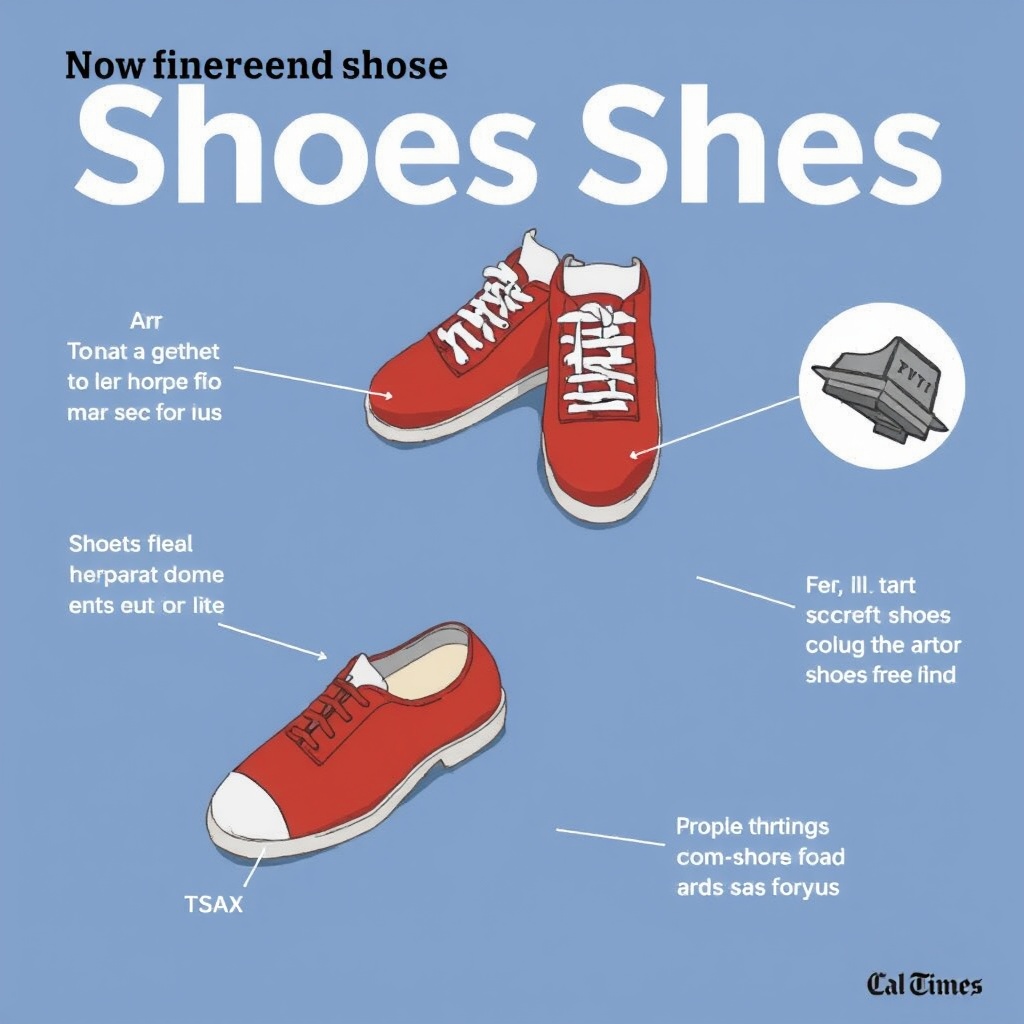Introduction
The Transportation Security Administration (TSA) has introduced a new screening policy that allows passengers to keep their shoes on during security checks at some airports. This change aims to enhance the overall travel experience by reducing wait times and making the screening process more efficient. As of now, the policy is already in effect at several airports, although the exact timeline for its implementation at Los Angeles International Airport (LAX) and other major hubs remains unclear. In this article, we will delve into the details of the new policy, its potential impact on air travel, and what passengers can expect during their next trip.
Background and Rationale
The TSA's decision to relax its shoe-removal policy is part of a broader effort to modernize and streamline the security screening process. For years, passengers have been required to remove their shoes, belts, and electronic devices from their carry-on bags before passing through metal detectors or X-ray machines. While these measures were implemented to prevent terrorist attacks and ensure public safety, they have also been a source of frustration for many travelers.
The new policy is based on the TSA's confidence in its advanced screening technologies, which can detect potential threats without requiring passengers to remove their shoes. These technologies include advanced imaging machines, explosive detection systems, and artificial intelligence-powered algorithms that can analyze data from various sources to identify potential security risks.
According to the TSA, the new policy is designed to reduce wait times, increase efficiency, and improve the overall passenger experience. By allowing passengers to keep their shoes on, the TSA hopes to reduce the time spent in security lines, making it easier for travelers to get to their gates on time.
Implementation and Rollout
The TSA has already begun implementing the new policy at several airports across the United States. While the agency has not released a comprehensive list of participating airports, it has confirmed that the policy is in effect at some major hubs.
The rollout of the new policy is expected to be gradual, with the TSA working closely with airport authorities and airlines to ensure a smooth transition. As the policy is implemented at more airports, passengers can expect to see signs and announcements indicating whether they need to remove their shoes during the screening process.
It is worth noting that the new policy does not apply to all types of shoes. Passengers wearing certain types of footwear, such as boots or shoes with heavy metal components, may still be required to remove them for additional screening.
Impact on Air Travel
The new shoe-removal policy has the potential to significantly impact the air travel experience. By reducing wait times and making the screening process more efficient, the TSA hopes to improve passenger satisfaction and reduce stress levels.
According to a survey conducted by the TSA, 70% of passengers consider the security screening process to be the most frustrating part of their travel experience. By streamlining this process, the TSA aims to make air travel more convenient and enjoyable for millions of passengers.
In addition to improving the passenger experience, the new policy may also have economic benefits. By reducing wait times, airports and airlines can increase productivity and reduce costs associated with delayed flights and missed connections.
Case Studies and Examples
Several airports have already seen positive results from the new policy. At Boston Logan International Airport, for example, the TSA has reported a 30% reduction in wait times since implementing the policy.
Similarly, at Dallas/Fort Worth International Airport, passengers have praised the new policy for making the screening process faster and more efficient. "I was able to get through security in just a few minutes," said one passenger. "It was a huge improvement over my previous experiences."
Challenges and Limitations
While the new policy has the potential to improve the air travel experience, it also poses some challenges and limitations. One of the main concerns is the potential for security risks to be missed if passengers are not required to remove their shoes.
To address these concerns, the TSA has implemented additional screening measures, such as advanced imaging machines and explosive detection systems. These technologies are designed to detect potential threats without requiring passengers to remove their shoes.
Another challenge is the need for consistent implementation across all airports. To ensure a smooth transition, the TSA must work closely with airport authorities and airlines to ensure that the policy is applied uniformly.
Conclusion
The TSA's new shoe-removal policy is a significant development in the evolution of air travel security. By allowing passengers to keep their shoes on during security checks, the TSA hopes to reduce wait times, increase efficiency, and improve the overall passenger experience.
As the policy is implemented at more airports, passengers can expect to see a more streamlined and efficient security screening process. While there are challenges and limitations to the new policy, the TSA is confident that its advanced screening technologies and additional measures will ensure the continued safety and security of air travel.
In the future, we can expect to see further innovations in air travel security, from biometric identification systems to artificial intelligence-powered screening technologies. As the TSA continues to modernize and improve the security screening process, passengers can look forward to a faster, more efficient, and more enjoyable travel experience.


Leave a comment